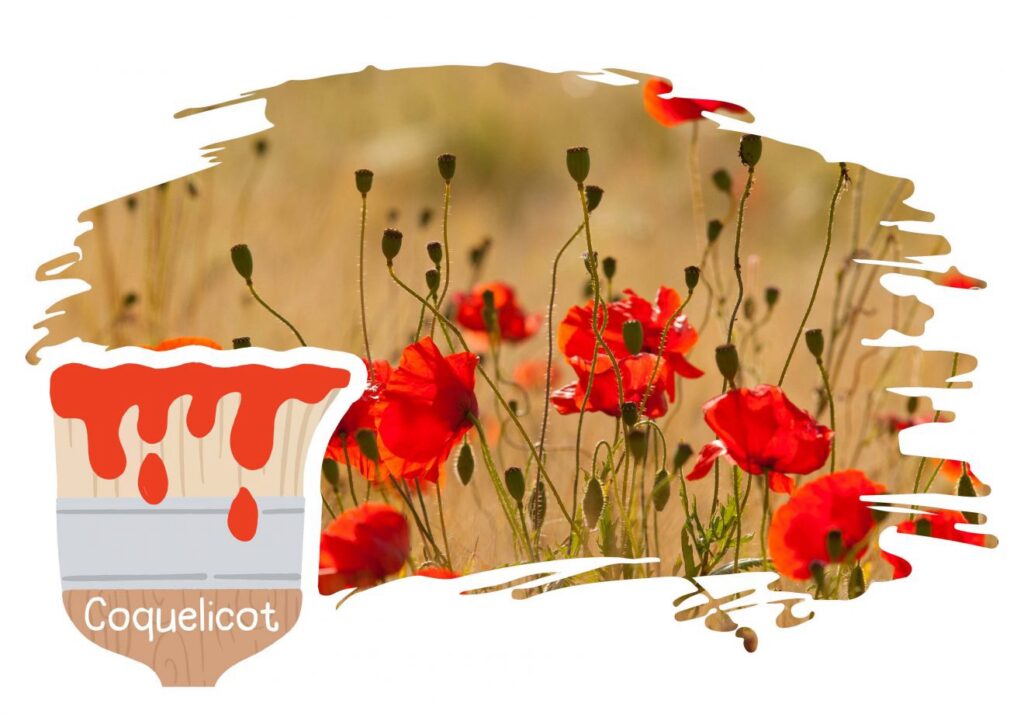Everyone has their own color preferences. Some people favor blue, while others are attracted to the vibrancy of red. Some find solace in the tranquility of white, whereas others may find its simplicity unappealing. We often gravitate toward familiar colors. Clearly, the color spectrum extends beyond what we encounter daily, offering not only a variety of colors but also numerous shades of those we recognize. However, have you ever thought about the existence of uncommon colors?
There are colors so rare that they often go unnoticed. Some of these hues are found in natural elements, while others are created by human ingenuity. A few may resemble familiar colors, but many remain obscure and unfamiliar to most people. Below is a list of 20 unique colors that you might not have encountered before.
10. Gamboge

Gamboge is a color that might be unfamiliar in Western regions but holds significant cultural importance in certain Asian locales. This saffron-like orange hue is revered for its spiritual significance, with Hindu and Buddhist monks wearing robes in this color to symbolize their devotion and ascetic lifestyle. Traditionally, gamboge is derived from the resin of trees found in Cambodia and other areas.
It’s also worth noting that the gamboge pigment, when processed into a powder, possesses strong medicinal properties, acting as a potent laxative and diuretic. Therefore, ingestion of this substance is not advisable.
9. Feldgrau

Feldgrau, which translates to “field gray” from German, has European origins and is sometimes compared to khaki. This color holds a somber historical significance, as it was worn by German soldiers, including Nazis, up until the end of World War II. Despite this association, feldgrau has been used by various military forces, likely because gray is a common color in military uniforms worldwide. The color continues to be present in contemporary fashion, often appearing in different styles of khaki clothing.
8. Falu

Falu is a distinctive color with a rich historical background, named after the Swedish mining town of Falun, famous for its once-thriving copper mines. Although the mines have been inactive for nearly three decades, Falun’s legacy lives on. At its peak, the town’s mines produced over half of the world’s copper. Appropriately, the color Falu is a reddish hue reminiscent of copper. This color is widely used in Sweden and also in Norway and Finland, where it is traditionally used to paint barns, similar to the iron red commonly seen on American barns.
7. Drake’s-Neck

No, this color is not named after the Canadian rapper or his neck. It has nothing to do with the Toronto Raptors or the Hotline Bling meme either. However, it does have a connection to dinosaurs… sort of. We’ll explain that shortly.
Drake’s-Neck is an intriguing name for a shade of blue. What does it have to do with dinosaurs? The connection is quite tenuous. The color is named after a drake, which is a male duck. Many drakes feature dark blue areas on their bodies, which is where the color gets its name. And how do dinosaurs fit in? Well, ducks are birds, and as you may have learned in school, birds are descended from dinosaurs. In fact, many biologists consider birds to be living dinosaurs. So, in a way, you could say the color is named after a raptor.
6. Coquelicot

Coquelicot might be an unfamiliar color with an unusual name, but it is named after a well-known flower. The term comes from the French word for the poppy flower, and coquelicot is a vibrant red shade. The poppy is widely recognized, especially in Europe, where it symbolizes World War I veterans and serves as a poignant reminder of those who lost their lives in combat. The color coquelicot carries a significant meaning reflective of this historical association.
5. Celadon

If you’re a fan of Pokémon Red and Blue, or their later versions, you might recognize Celadon City, one of the game’s locations.
Celadon is a pale green shade believed to have originated in China, resembling the color of the most familiar type of jade. When imagining jade artifacts, they often display this celadon hue. However, jade isn’t the only material associated with this color; it’s also a traditional shade for Korean porcelain. The term “celadon” became so closely linked with Korean pottery that it was used to describe the pottery regardless of its actual color.
4. Burlywood

Burlywood is a unique color with an interesting history. This particular brown shade is named after the Indian tree Butea frondosa, from which it is derived. The color specifically refers to the brown hue typical of the wood produced by this tree. Native to India, Butea frondosa also grows throughout South and Southeast Asia.
3. Banan

Banan is perhaps the most unusual color mentioned here, and arguably the tastiest. As the name implies, it is inspired by the banana. Its playful nickname, “Banan-appeal,” cleverly references the shade found inside a banana peel.
Interestingly, the word “banana” is believed to come from an Arabic term for “finger,” likely alluding to the fruit’s shape. This fun fact might even trigger a craving for a banana.
2. Australien

The color “Australien” is so rare that it isn’t even listed on Wikipedia. When you search for “Australien,” you’re more likely to find information about Australia, as it’s the German word for the country.
This elusive color’s name was coined by the 1897 fashion manual “House Decoration,” inspired by the Australian Outback. The Outback, known for its expansive desert landscapes that cover much of Australia, showcases a brownish-red hue. This distinctive earthy red-brown was reportedly a fashionable choice in Victorian England, especially for women’s clothing.
1. Amaranth

The hue known as amaranth takes its name from the plant and falls within the red spectrum. Interestingly, there is no consensus on the exact shade it represents. Some describe amaranth as a pink similar to classic bubblegum, while others see it as a deeper tone closer to the color of the amaranth plant itself. Despite these variations, both the name and the shade are distinctly rare and unique.
